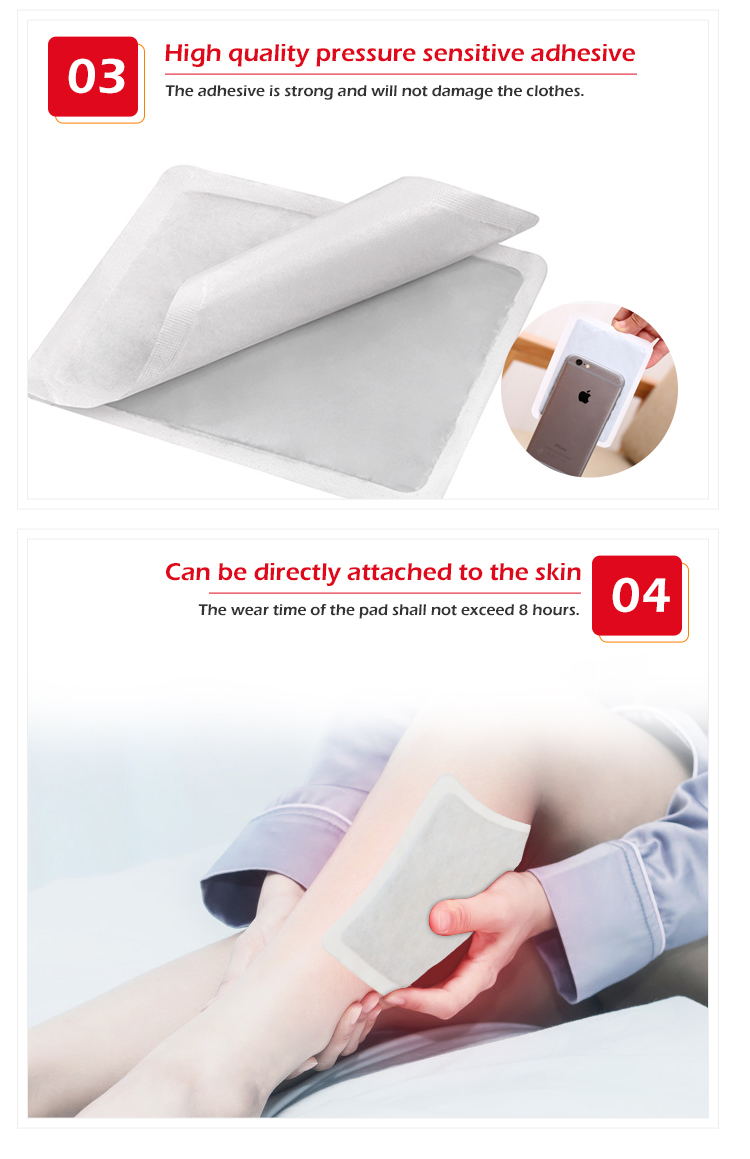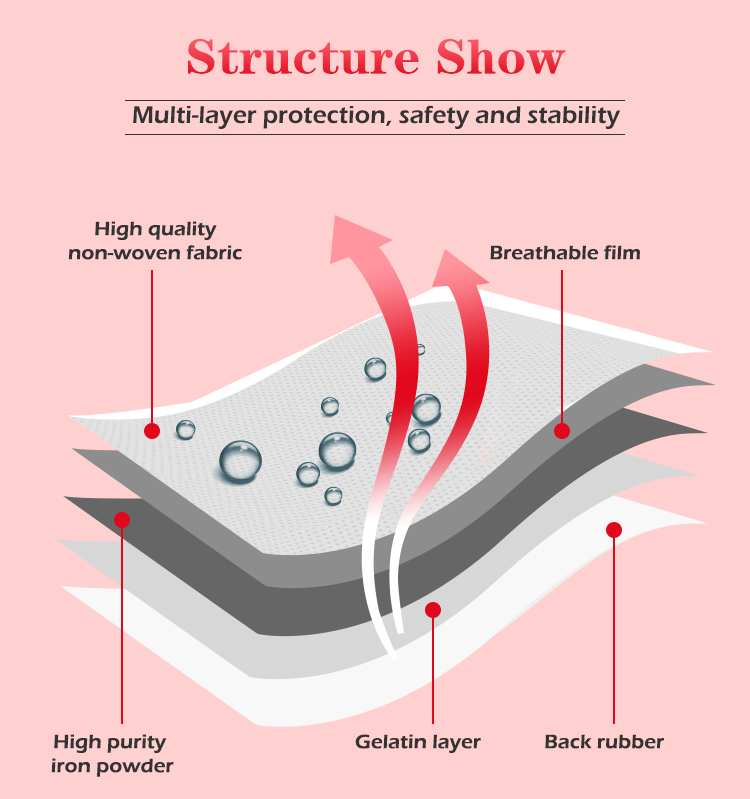How Can a Deep Heat Patches Supplier Assist with Product Packaging?
When it comes to launching a custom deep heat patch line, packaging plays a crucial role in not only protecting the product but also in enhancing brand visibility and customer experience. A reliable Deep Heat Patches Supplier can be a valuable partner in designing, developing, and refining product packaging, helping to create an impactful first impression and build trust with consumers. In this guide, we’ll explore how a Deep Heat Patches OEM can assist with packaging customization, regulatory compliance, sustainable packaging options, and branding support.

Why Packaging Matters for Deep Heat Patches
For pain relief products like private label deep heat patches, packaging serves several essential purposes. Good packaging ensures product integrity, extends shelf life, conveys important usage instructions, and enhances brand perception. The right packaging can:
- Protect Product Quality: Packaging that safeguards the integrity of ingredients is crucial, especially in products that require specific storage conditions.
- Communicate Brand Identity: Packaging is an opportunity to convey your brand’s identity, values, and professionalism.
- Ensure Regulatory Compliance: Labels and packaging for health products must meet regulatory standards to be sold legally in various markets.
- Increase Consumer Appeal: Unique, visually appealing packaging attracts customers, providing a competitive edge in a crowded market.
By working closely with a Deep Heat Patches Manufacturer that offers comprehensive packaging services, your brand can ensure that its packaging is both functional and compelling.
How a Deep Heat Patches OEM Assists with Product Packaging
A trusted Deep Heat Patches Supplier typically offers a range of services to support your packaging needs. Here’s how an experienced OEM partner can assist:
1. Customizable Packaging Design for Brand Consistency
When it comes to custom deep heat patches, one-size-fits-all packaging may not align with your brand’s goals. A Deep Heat Patches OEM can work with you to design packaging that reflects your brand’s identity, whether you want a minimalist look, vibrant colors, or premium finishes. OEMs usually provide:
- Customizable packaging materials (plastic, foil, biodegradable options)
- Multiple printing options (screen printing, embossing, digital printing)
- Size and shape flexibility to accommodate different product dimensions
Having the option to create unique packaging designs helps differentiate your private label deep heat patches from competitors and reinforces your brand’s image across all consumer touchpoints.
2. Ensuring Compliance with Industry Regulations
In most regions, pain relief products must meet specific regulatory standards. Packaging is often required to include information such as ingredients, usage instructions, storage recommendations, and safety warnings. A seasoned Deep Heat Patches Manufacturer can guide you through these requirements and ensure your packaging meets industry standards, which may include:
- FDA compliance in the United States, which mandates specific labeling requirements for over-the-counter pain relief products.
- CE marking for European markets, indicating that the product meets European health and safety standards.
- ISO standards for quality and safety, which are essential for many international markets.
Choosing a Deep Heat Patches OEM with experience in regulatory compliance can reduce the time, expense, and risks associated with navigating labeling laws, allowing for smoother market entry.
3. Sustainable and Eco-Friendly Packaging Solutions
Consumers today are increasingly conscious of their environmental impact, and sustainable packaging can enhance a brand’s appeal. Many Deep Heat Patches Suppliers offer eco-friendly packaging solutions, including recyclable or biodegradable materials and reduced-plastic designs. By opting for sustainable packaging, you can:
- Enhance your brand’s image as an eco-conscious option.
- Appeal to environmentally conscious consumers who prioritize sustainable brands.
- Reduce waste and environmental impact through recyclable or compostable materials.
A Deep Heat Patches OEM can help you source sustainable packaging options and may also offer guidance on eco-labeling, which can be used to communicate your brand’s commitment to sustainability to consumers.
4. High-Quality Printing and Finishing Options for a Professional Look
Packaging aesthetics play a significant role in consumer decision-making. A reputable Deep Heat Patches Supplier will have high-quality printing options and finishing techniques to make your product packaging stand out. Some popular options include:
- Glossy or matte finishes for a premium look
- Embossing or debossing for brand logos or text
- Holographic or foil stamping to catch consumer attention
- High-definition printing for vibrant, attractive packaging visuals
These finishing touches allow private label deep heat patches to compete on retail shelves and online marketplaces by capturing consumer attention and conveying a professional brand image.
5. Packaging that Enhances Product Usability
Beyond visual appeal, functional packaging that is easy to open and reseal can improve the customer experience. An experienced Deep Heat Patches Manufacturer will consider factors like ease of use, resealability, and product protection when designing packaging. Functional packaging enhancements might include:
- Tear notches for easy opening
- Resealable closures to maintain product freshness
- Single-use packaging for convenience and hygiene
- Instructions printed directly on the packaging for easy reference
Functional packaging provides added convenience and can enhance customer satisfaction, contributing to repeat purchases and positive reviews.
6. Cost-Effective Packaging Solutions
Creating packaging that is both effective and affordable can be a challenge, especially for brands with tight budgets. An established Deep Heat Patches OEM can help optimize packaging materials and processes to reduce costs without compromising quality. Here’s how a supplier can assist:
- Suggesting cost-effective materials that still meet your quality standards
- Bulk production options that reduce per-unit costs
- Streamlined processes to minimize waste and lower production expenses
An OEM partner with experience in producing custom deep heat patches at scale will know how to balance quality with cost-effectiveness, helping your brand maximize its return on investment.
7. Branding and Marketing Support
Some Deep Heat Patches Suppliers offer additional services, such as branding support and market insights, which can be invaluable in refining your packaging approach. OEM suppliers with in-house design teams can collaborate with your brand to create packaging that reflects current design trends and resonates with target customers. They can also:
- Provide feedback on packaging design for specific markets
- Offer marketing insights into colors, materials, and design elements that attract consumers
- Assist in developing cohesive packaging themes for product lines
This additional support can be particularly valuable if you’re entering a new market or launching a new line of private label deep heat patches.
Common Packaging Types for Deep Heat Patches
Deep heat patches typically require packaging that protects against moisture, light, and contamination while ensuring ease of use. Here are some common packaging types a Deep Heat Patches Manufacturer may offer:
- Individual sachets or pouches: Ideal for single-use products, often foil-lined for added protection.
- Blister packs: Provide a high level of protection and are easy for consumers to open.
- Resealable bags or pouches: Great for multi-use products, preserving product quality and providing convenience.
- Retail boxes: Common for bulk purchases, can be customized with branding and regulatory information.
By choosing the right packaging type, your Deep Heat Patches Supplier can help improve product usability and maximize shelf appeal.
Steps to Work with a Deep Heat Patches OEM on Packaging Design
To get the most out of your collaboration with a Deep Heat Patches OEM on packaging, here’s a recommended process:
- Define Your Packaging Goals: Consider factors like functionality, visual appeal, sustainability, and cost.
- Consult on Compliance Requirements: Discuss any specific regulatory needs based on your target market.
- Select Packaging Materials and Design: Work with the OEM to choose materials that meet your quality, cost, and branding requirements.
- Request Samples: Before finalizing, test packaging samples for durability, ease of use, and appearance.
- Optimize for Production: Once the design is finalized, streamline the production process with your OEM for cost-effectiveness.
- Evaluate Performance Post-Launch: Gather customer feedback to determine if any packaging adjustments are needed.
Questions & Answers
1. Why is packaging important for private label deep heat patches?
- Packaging protects the product, ensures regulatory compliance, enhances brand visibility, and can improve customer satisfaction.
2. Can a Deep Heat Patches Supplier offer eco-friendly packaging options?
- Yes, many suppliers now offer sustainable materials like recyclable or biodegradable options to help brands meet eco-friendly goals.
3. What types of packaging are best for custom deep heat patches?
- Common options include individual sachets, blister packs, resealable bags, and retail boxes, each providing different benefits for protection and usability.
4. How can I ensure that packaging meets regulatory standards?
- Partnering with a Deep Heat Patches OEM that has experience with regulatory compliance can help you design packaging that meets all legal requirements for labeling and safety.
5. Can packaging be customized for brand consistency?
- Absolutely. Customizable packaging options are available for color, materials, printing, and design, allowing you to create a cohesive brand experience.
6. Is it cost-effective to work with a Deep Heat Patches Supplier on packaging?
- Yes, OEMs often have bulk production options and experience in optimizing packaging to balance quality with cost.






